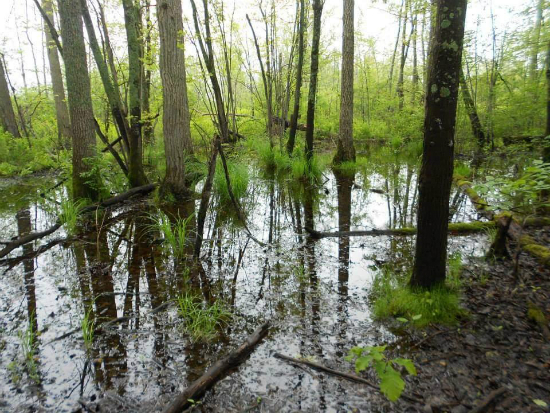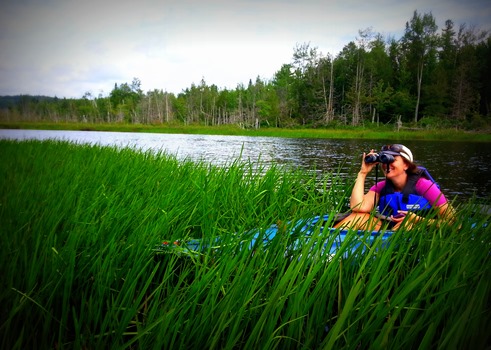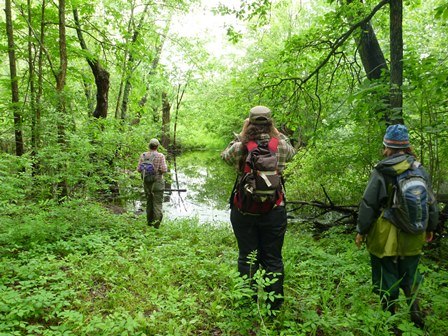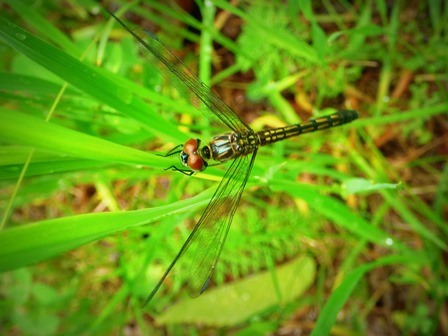wetlands
Wetland Hydrology
 Wetland hydrology refers to the timing and extent of flooding or soil saturation and is considered to be the "driving force" in wetland formation. Rainfall, soil permeability, position in the landscape, surrounding land use, and type of vegetation all influence the hydrology of a wetland.
Wetland hydrology refers to the timing and extent of flooding or soil saturation and is considered to be the "driving force" in wetland formation. Rainfall, soil permeability, position in the landscape, surrounding land use, and type of vegetation all influence the hydrology of a wetland.
Wetland Identification and Delineation
The saturated or seasonally saturated conditions in wetlands create an environment that favors the growth of specifically adapted wetland plants (hydrophytic vegetation) and promotes the development of wetland soils (hydric soils).
Wetland Types
Vermont contains a great diversity of wetlands, ranging from open water habitats to rich forested swamps. Wetlands vary because of differences in hydrology, parent soil material, historical land use, topography and other factors. These differences make each wetland unique in its appearance, biota, and function in the landscape. Some general wetland types present in Vermont include open water wetlands, emergent wetlands, scrub-shrub wetlands, forested wetlands, wet meadows, peatlands, and vernal pools.
Landowner's Guide to Wetlands
Check for Wetlands Before You Buy or Build
How wetland laws may impact your land buy or building project
How to Identify a Wetland
Vermont has many types of wetlands. At first glance, an area of wetland may not be obvious to identify. Follow the steps below to help identify if the parcel you want to buy or build involves a wetland.
Step 1: Identify Wetlands
There are several ways that you can check for wetlands on a parcel that you are looking to buy and develop:
All Resources
Contact Wetlands Staff
Wetlands Inquiry Portal
Select the request type that best describes your inquiry. Project review and site visit requests have a special form which emails your District Wetlands Ecologist all of the relevant information so that they may process your request most efficiently.
Allowed Uses and Best Management Practices (BMPs)
Certain activities are allowed in Class I or Class II wetlands without a permit. Allowed uses must follow guidelines specified in Section 6 of the Vermont Wetland Rules, and must comply with all other applicable laws. Examples of allowed uses include certain agricultural and silvicultural activities, certain utility operations and maintenance, low-impact recreational activities, certain activities relating to scientific research and education, and ordinary residential activities in existing lawns.




